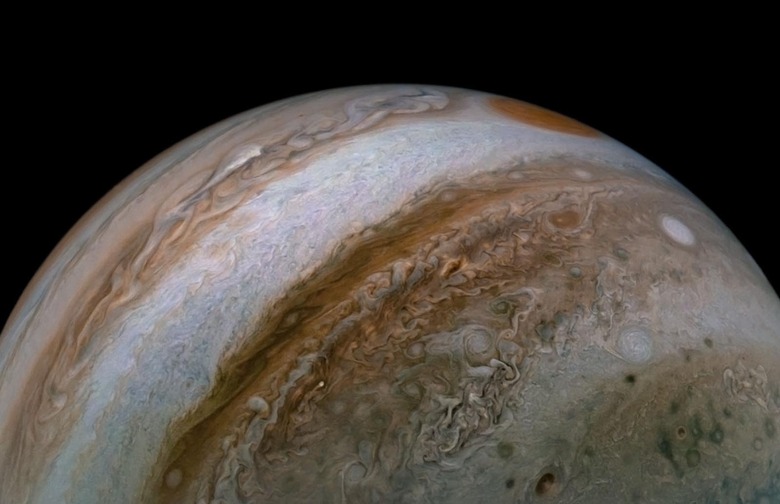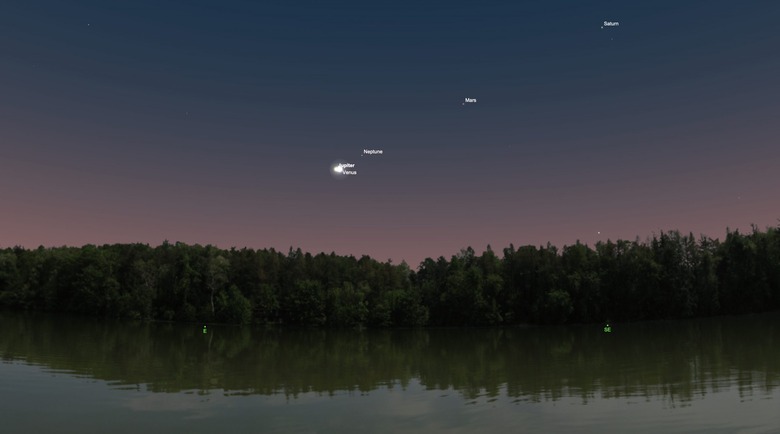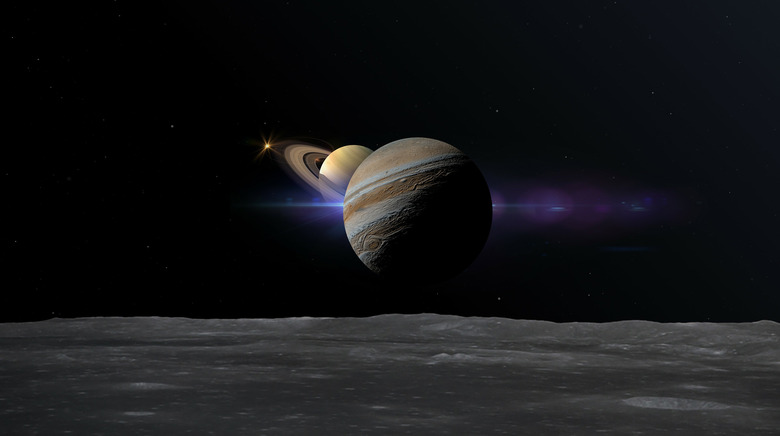Here's When You Can Watch Venus And Jupiter Appear To Collide In The Sky
Skywatchers have a lot to look forward to as we head towards the end of April. NASA says that early risers will be able to get a good view of the latest Jupiter-Venus conjunction on Saturday, April 30, 2022.
The celestial event will continue on the morning of May 1, but Jupiter and Venus will have their positions reversed.
When to watch the Jupiter-Venus conjunction in April 2022
Those wanting to catch the Jupiter-Venus conjunction as it takes place in April of 2022 will need to wake up early on April 30. Most should be able to view the conjunction from rural areas starting around 6:00 AM on Saturday morning.
During this conjunction, Jupiter and Venus will appear to collide. The two planets will be so close together that their glare will create a single glowing orb.
NASA says that the Jupiter-Venus conjunction is only possible because of how aligned the Earth and the other two planets are. In reality, Jupiter and Venus are still miles apart. However, the perspective of the two planets from Earth is what makes it look like they are colliding.
It's an intriguing spectacle, and while it holds no real astronomical meaning, skywatchers will enjoy checking it out.
What is planetary conjunction?
If you're new to sky watching or just new to astronomy in general, hearing about planetary conjunction might throw you off. Don't sweat it. As I noted above, these events don't really hold any astronomical significance, aside from looking cool.
Basically, planetary conjunction, like the upcoming Jupiter-Venus conjunction, is just when two planets appear to collide or swipe past each other in the sky. It's all based on perspective, as I noted above.
Conjunctions can take place between two planets, a planet and a moon, as well as a planet and a star. It's just about two celestial objects moving past each other from your vantage point.
One of the reasons that Jupiter-Venus conjunctions are so cool, though, is because of how bright these planets are. Jupiter and Venus are by far two of the most luminous planets in Earth's sky. As such, their conjunctions are normally called "great conjunctions."
Not only are they pretty to look at, but they are also super bright in the sky.
There are a lot of really cool visuals that you can experience just by looking up in the sky at the right time. For example, we've got a really cool total solar eclipse set to hit the United States in 2024.


